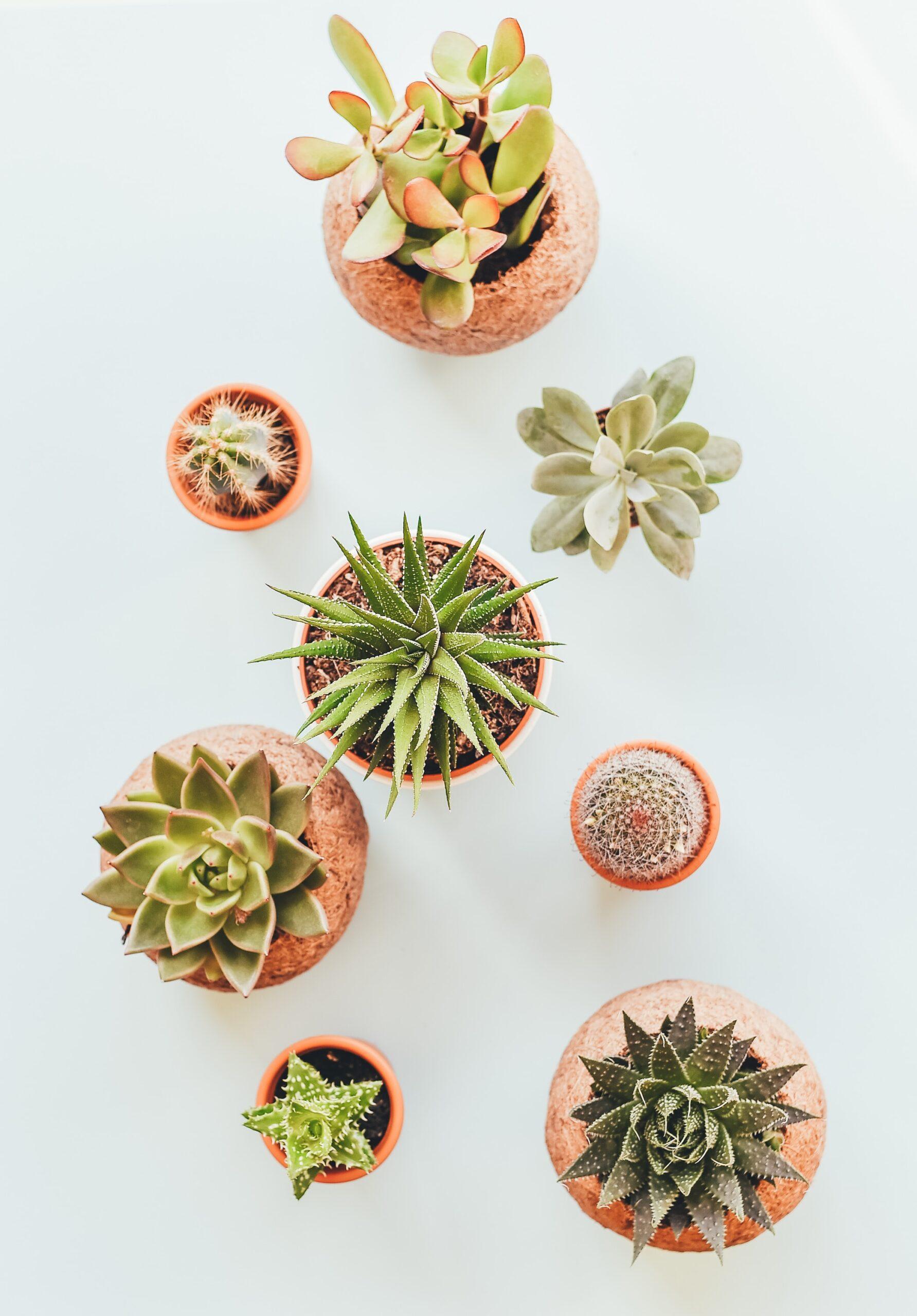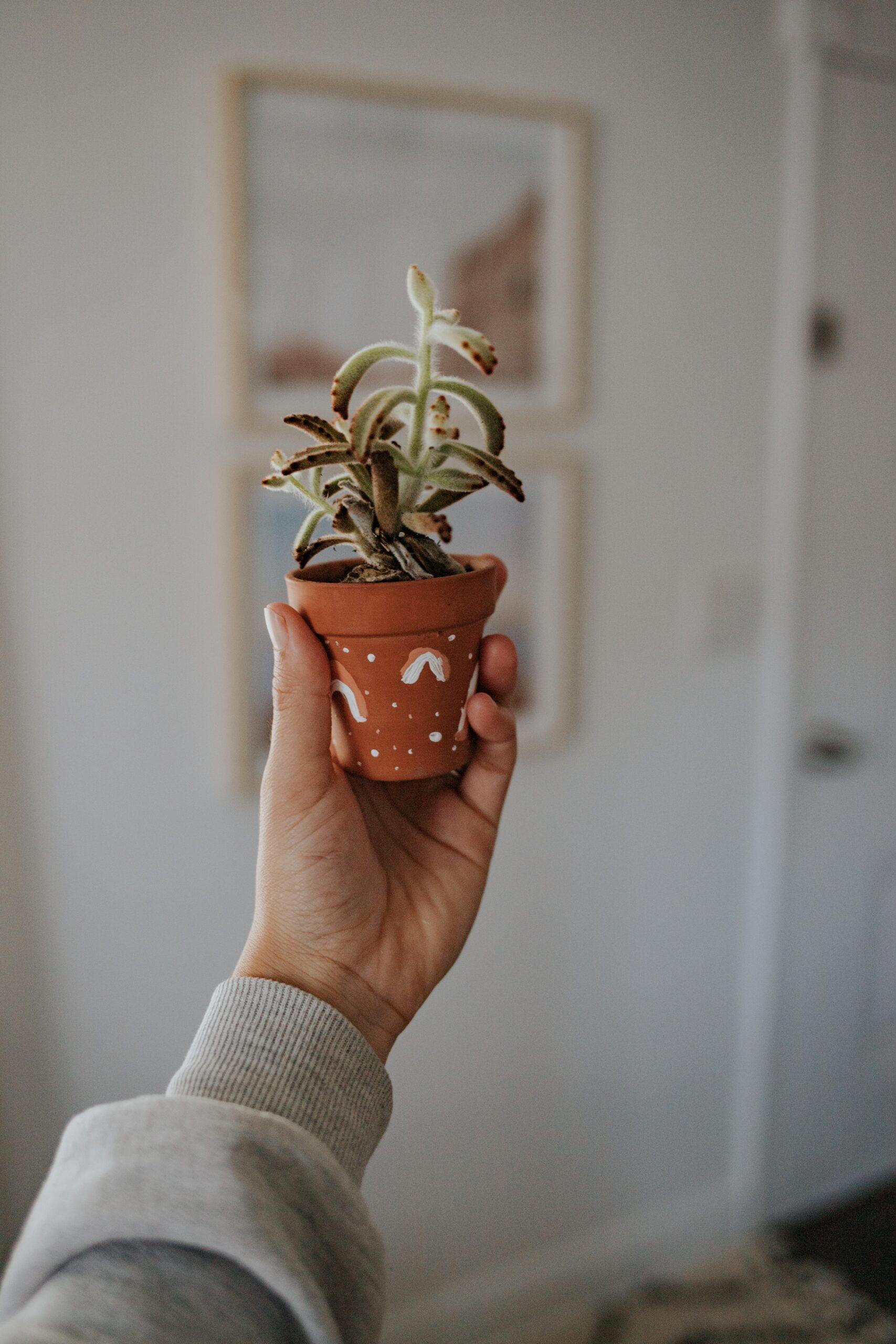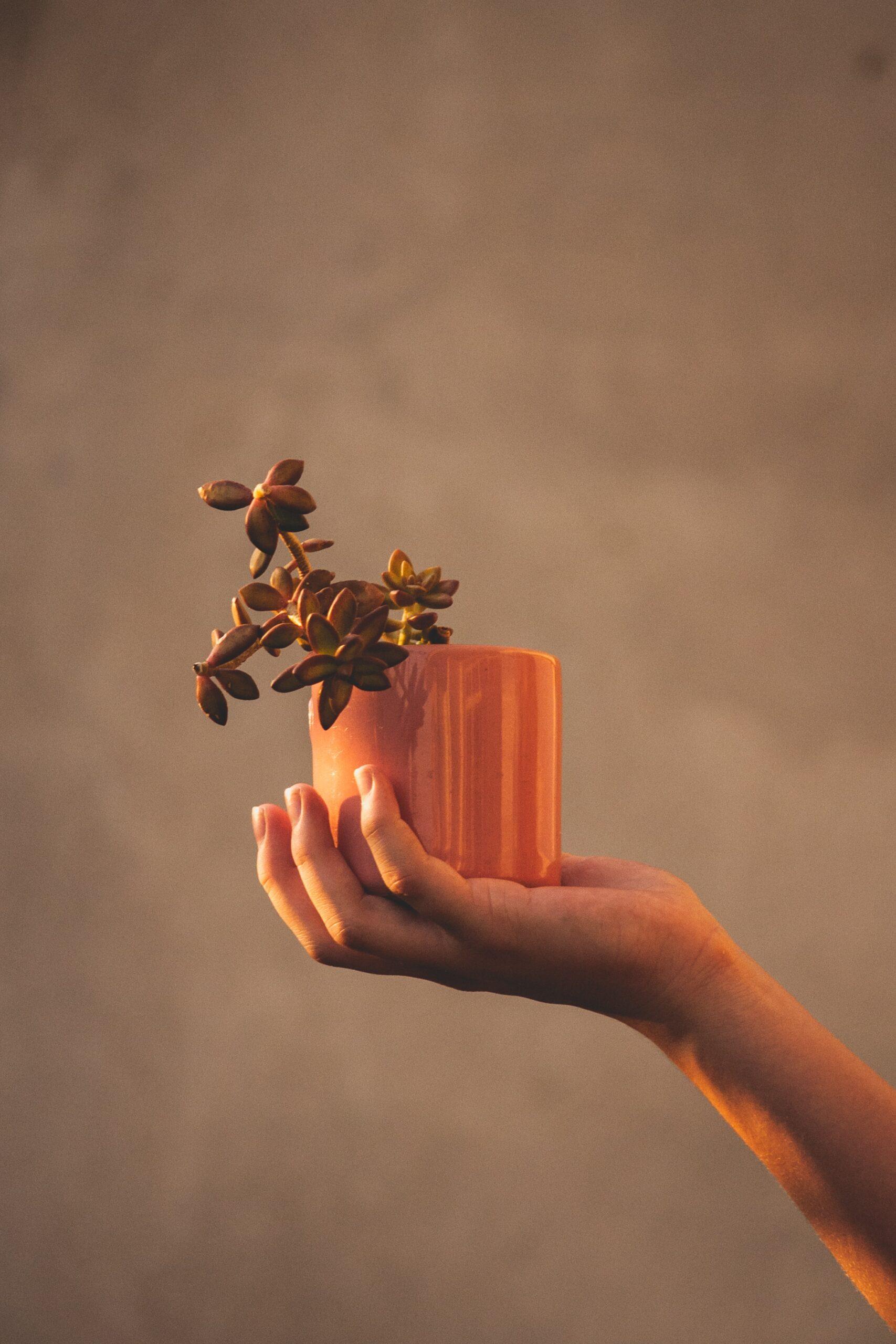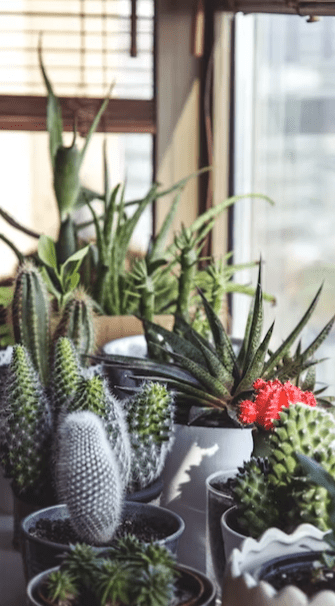All About Succulents:
An Itty Bitty Spotlight
Indoor plants have often seen succulents as a top choice for many. Their allure is drawn from a multitude of factors. With a broad spectrum of forms and dimensions, they’re also easy to maintain, necessitating minimal attention to hydration and trimming. Certain types of succulents even thrive in low-light conditions, making them the perfect selection for areas lacking in natural sunlight. The term ‘succulent’ derives from their distinctive, chunky, sap-filled foliage that is their hallmark. This type of leaf structure enables them to absorb and conserve moisture more proficiently compared to plants with more slender leaves.
What is a succulent?
A succulent plant is a type of plant that has thick, fleshy parts, usually leaves or stems, that have adapted to store water. This unique adaptation allows succulents to thrive in arid conditions and environments, such as deserts, where water is scarce.
Succulents come in a variety of shapes, sizes, and colors, and they are often favored for their aesthetic appeal and relatively low maintenance needs. Many have a unique ability to withstand prolonged periods of drought due to their capacity to store water in their tissues.
While succulents are often associated with cacti, not all succulents are cacti. They belong to a broad range of botanical families, and they are found all over the world. Some popular types of succulents include aloe vera, jade plant, and various echeveria species.
What is the difference between succulents, cacti, and air plants?
Succulents, cacti, and air plants are all unique types of plants with distinct characteristics:
Succulents: As previously mentioned, succulents are a group of plants known for their water-storing capabilities. They have thick, fleshy leaves or stems that have adapted to store water, allowing them to thrive in arid conditions and environments. They come in various shapes, sizes, and colors and are found all over the world.
Cacti: Cacti are a specific type of succulent. All cacti are succulents, but not all succulents are cacti. Cacti are distinguished by the presence of areoles, small cushion-like structures from which spines, new branches, and even flowers grow. They are typically found in harsh desert environments and are well-adapted to extremely dry and hot conditions.
Air Plants (Tillandsias): Air plants are a genus of plants within the bromeliad family. What makes air plants unique is that they do not require soil to grow. Instead, they absorb water and nutrients through their leaves from the air and rainfall. They are epiphytic, meaning they naturally grow on trees or rocks rather than in soil. Most air plants originate from the South and Central American forests, deserts, and mountains. Unlike succulents and cacti, air plants typically require more humidity and indirect light.
Each of these plant types has adaptations suited to their natural habitats, and they can all make interesting and relatively low-maintenance additions to an indoor or outdoor garden, provided their specific care requirements are met.
How do I identify a succulent?
Identifying a succulent from other types of plants mainly involves recognizing certain key characteristics that are unique to succulents. Here are some pointers to help you distinguish succulents:
- Fleshy, thick leaves or stems: This is the most recognizable feature of succulents. The leaves or stems are often swollen and appear engorged, thanks to their ability to store water. Some have rounded leaves, while others might have flat or concave leaves depending on the species.
- Compact shape: Many succulents have a compact shape with leaves close to the stem, which helps reduce their surface area and water loss.
- Waxy or glossy coating: To further prevent water loss, succulents often have a waxy or glossy coating on their leaves or stems. This coating, known as a cuticle, can also make the plant appear blue or gray in color.
- Vivid colors: While not exclusive to succulents, they often come in a variety of vibrant colors that change depending on sunlight, temperature, and water availability.
- Root structure: Succulents typically have shallow, spreading roots designed to absorb water rapidly over a wide area.
- Pores or “stomata”: Succulents, especially those from hot environments, have their stomata (pores used for gas exchange) open only at night to minimize water loss during the hot day. While this is not a visually identifiable trait, it’s a distinctive physiological characteristic of succulents.
Remember that while these traits are common to many succulents, there’s a wide variety of succulents with different appearances. If you’re unsure, bring it by and let our team at Itty Bitty Trees take a look.
Why are succulents so popular?
For years, succulents have been a mainstay in indoor gardening, adorning offices and homes alike. Recently, though, there’s been a notable uptick in their popularity, owing to a myriad of advantages:
- Their care needs are minimal. The frequency of watering needed is low and they seldom require trimming.
- Their diversity in size, form, and hues is vast. From petite plants in diminutive pots perfect for desk decor to larger varieties, there’s a succulent for every taste.
- They’re less prone to pest infestations. Many plants attract pests due to their regular watering needs. However, with succulents, the infrequent watering and their thick, waxy foliage, which is harder for pests to infiltrate, significantly reduces pest-related issues.
- For nurseries and stores, they’re an easy sell. Given their resilience in the face of limited water availability, they can endure extended periods in transit. Additionally, their generally compact size facilitates economical and bulk shipping. Some can even be packed in plastic bags for cross-country transport. They can also be displayed in a garden center for extended periods without losing their allure.
- Overgrowth is rarely a concern. Unlike common indoor plants like Pothos, which grow and start to vine, succulents typically stay within manageable bounds, eliminating unnecessary maintenance and inconvenience.
What are some tips to take care of succulents?
Taking care of succulents can be relatively easy given their low maintenance needs. However, they do have certain specific requirements that help them thrive which can greatly carry by species. Here are some general tips to help you care for your itty bitty succulent babies:
- Sunlight: Most succulents need a good amount of sunlight. A few hours of direct sunlight each day is ideal, although the exact amount can vary by species. Be careful of intense sunlight, though, as it can scorch the leaves. If you’re keeping your succulents indoors, a sunny window is a great location.
- Watering: Succulents store water in their leaves, stems, or roots, which allows them to go long periods between waterings. However, when you do water them, you should water them thoroughly, letting the water drain out of the pot. Wait until the soil is completely dry before watering again to prevent root rot.
- Soil: Succulents require well-draining soil to prevent water-logging. Many garden centers sell soil specifically made for succulents and cacti. You can also make your own by mixing potting soil with something to increase drainage, such as perlite, sand, or gravel.
- Pot: Always use a pot with a drainage hole to ensure excess water can escape. Overwatering and poor drainage are the quickest ways to kill succulents.
- Temperature: Succulents usually prefer cooler nights and warmer days, similar to desert climates. Most succulents can tolerate a range of temperatures, but extreme cold or heat could be harmful.
- Propagation: Many succulents are easy to propagate. This can often be done by using a leaf or stem cutting, allowing it to callus over a few days, and then planting it in well-draining soil.
- Pests: Keep an eye out for common pests such as mealybugs and aphids. If you notice your succulent looking unhealthy or see small bugs on the leaves or in the soil, you may need to take action to remove the pests.
Remember, different succulents have different care needs, so it’s always a good idea to research the specific care requirements for the type of succulent you have.
Need more help?
At Itty Bitty Trees, our team of plant experts is always ready to assist you with your succulent queries. Whether you need advice on choosing the right succulent for your space, tips on caring for your plants, or help diagnosing a plant problem, we’re here to guide you. Our vast knowledge and passion for succulents ensure you’ll receive the best advice for your green companions. Don’t hesitate to reach out to us with your succulent questions – we’re excited to help you cultivate a thriving indoor garden!
Get In Touch!
(731) 333-3461




